Tags
Related Posts
Share This
“For Colored Girls”
Tikia “Fame” Hudson’s production of Ntozake Shange’s For Colored Girls is a rare theater-going experience. The cast relishes every second of the production. They inhabit their characters, fully present at all times. The women move in fluid, tightly rehearsed motions. When they laugh, it feels spontaneous. The performers honestly express their enjoyment and it is infectious. Hudson is a studio arts major, who, in addition to directing and producing, also stars in the play as the Lady in Orange. Her performance in the play’s penultimate poem, “a nite with beau willie brown,” proves that Hudson is a true auteur. She takes on the role of Crystal, an abused woman who gives her lover too many chances. Her tears are authentic as the poem reaches its chilling conclusion.
The cast consists of nine women. Though only two of the actresses are Theater majors, the entire cast excels in the production. The characters in the play represent different colors of the rainbow (Lady in Red, Lady in Orange, etc.). Each of the actresses wear garments that match their characters’ names: scarves of orange, brown, yellow, blue, red, purple, white, and green wrap around ankles, wrists or hair. Flower-shaped bracelets grace their wrists in every color of the rainbow. Even the actresses’ nails shine in matching colors.
The show volleys from lighthearted to reflective to righteous to despair without ever descending into tedium. They walk into the aisles, offering worn out excuses for rape, forcing the audience to come face to face with this ugly reality. “Maybe it was a misunderstanding,” “Maybe I caused it,” “It’s hard to press charges against a friend.” At other times, the actresses sit amongst the audience, in reserved seats, creating a sense that we are all active participants. They gather in groups of varying sizes to listen to each other speak and sometimes throw in their two cents. The Lady in Green says she sits with her legs open sometimes. “You arid,” shouts the Lady in White, waving her hand in front of her face.
Tawanda Suessbrich-Joaquim plays the Lady in Red. She carries herself with elegance and dignity in the poems “no assistance” and “one.” “No assistance” is told from the perspective of a woman dictating a letter, addressed to the man who scorned her. “I have loved you for eight months, two weeks and a day,” she says. “One” recounts the sexual power of a woman who has no problem telling a man to leave in the morning. The pieces perfectly suit Suessbrich-Joaquim, who demands respect from the audience. Both of the poems express the play’s ultimate goal of depicting the strength of women.
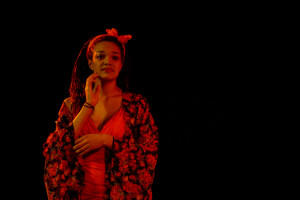
Tawanda Shessbrich-Joaquim in For Colored Girls directed by Tikia Fame Hudson at Warehouse 21. Photo by Luke E. Montavon
Shange’s play was first produced in 1975 under the full title: for colored girls who have considered suicide/when the rainbow is enuf. Shange originally wrote 20 separate poems, then compiled them to create the play. She called the production a choreopoem, as it combines poetry with music and dance. All of the poems express varying aspects of what it means to be a black woman in America. Hudson’s production makes minor changes, removing one of the play’s poems, adding an additional character (the Lady in White) and occasionally switches the traditional characters for particular poems, but this does not detract from the show.
The play invites the audience into the fun with the poem “my love is too.” Each of the ladies describes why their love is too important to have thrown back in their face. It is too “delicate,” “beautiful,” “sanctified,” “magic,” “Saturday nite,” “complicated,” “music.” With “music,” the women begin to dance and chant. Hudson stomps her feet. They rock and snap to the rhythm tapped out on a drum. The audience claps along. On the offbeat, Ajaneece Johnson adds, “Yadankadank,” drawing laughter from the crowd. The next time around, she gestures for the audience to say it with her. Chantelle Mitchell, the Lady in Purple, dances out in front of the others. “No, no, no,” says Hudson in response to her dancing.
Josiah St. Lewis Noray and Eugene Mason IV accompany the musical numbers on African drum and piano. Occasionally, Bruna Bittencourt dances amidst the Ladies, first in gypsy attire, then in a sparkling gold top for the poem, “sechita.” Chantelle Mitchell, who provides many of the production’s most humorous moments, makes it clear that she is just as capable of performing serious material. She tells the story of Sechita, a woman from Louisiana, who embodies the spirit of the Egyptian goddess of creativity. As Bittencourt twirls in the background, Mitchell’s delivery aligns with the beating of the drum. She swings her leg in perfect synchronicity with Bittencourt.
Some of the production’s most memorable language and vivid imagery comes in the poem, “abortion cycle #1.” Haley Pickens, as the Lady in Blue, describes the emotional aftermath of abortion. “Metal horses grew in my womb,” she says. “Dead mice fell from my mouth.” She grasps a red scarf in her hands, the only moment the scarf does not match with the character’s color. Rachel Dupard, Loryn Haycock and Suessbrich-Joaquim enter from different directions, clinging to Pickens’ sides and walking her offstage.
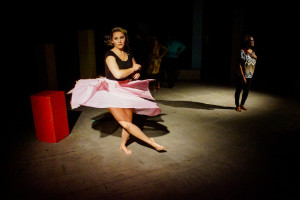
Left, Bruna Bittencourt dances during ‘For Colored Girls’ directed by Tikia Fame Hudson at Warehouse 21. Photo by Luke E. Montavon
This show of female support echoes throughout the production. When three friends vie for the same man in “pyramid,” they all end up back together, the Lady in Yellow leaning her head on the Lady in Orange. The love between them is like the love between sisters. The sentiment resonates with the following number as the entire cast dances along to “We Are Family.” The play confirms the strength and solidarity of women. This solidarity may be accomplished anywhere in the world and has certainly been accomplished among the actresses in this play. The cast makes their camaraderie clear from the opening number. When they are having fun, we are having fun.
The play concludes with “a laying on of hands,” and brings the entire cast back to the stage for a final musical number. They sway and hold hands, singing “I found God in myself and I loved her.” The women’s voices complement each other well. At the curtain call, Hudson deservedly earns the most applause. The lights fade down and the houselights come on again. The cast returns to meet the audience. An air of jubilance remains amidst the crowd as a dance party breaks out to Beyonce’s “7/11.” Those who missed the show should count themselves lucky that the second performance was rescheduled for 2 p.m., March 8 at Warehouse 21.






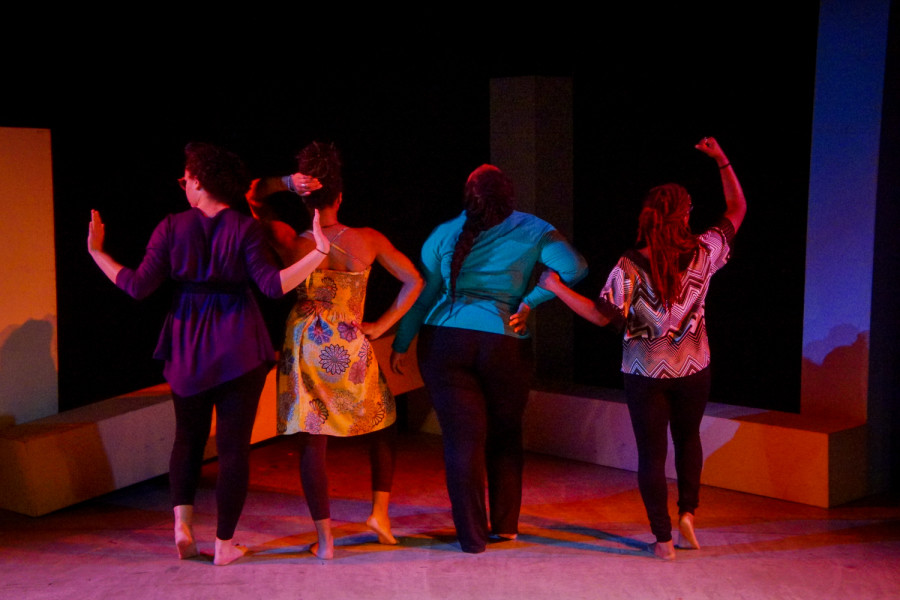
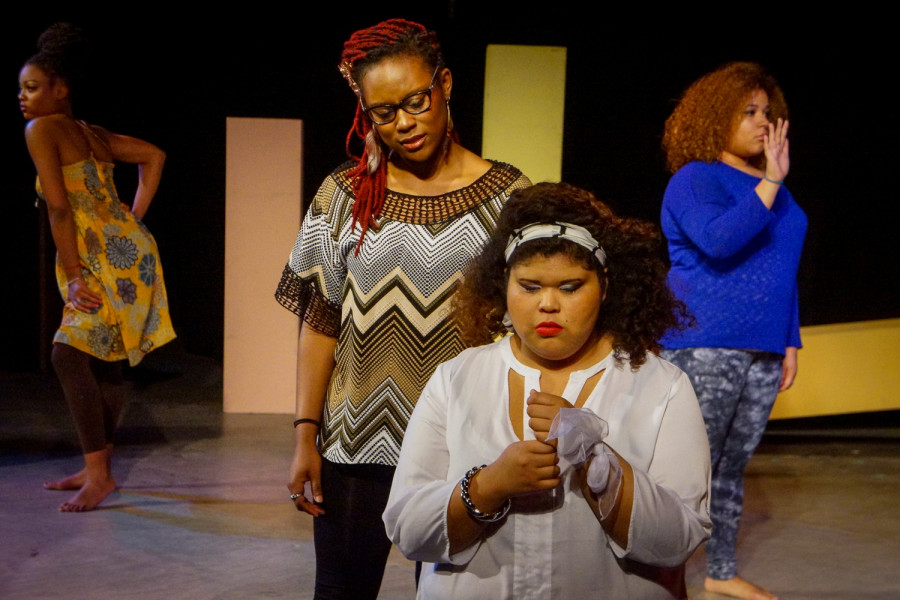
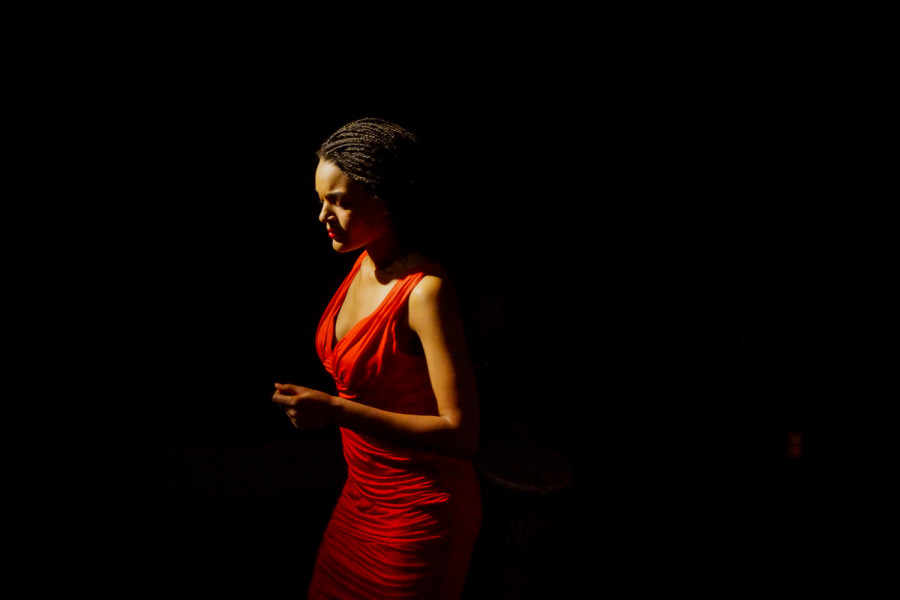
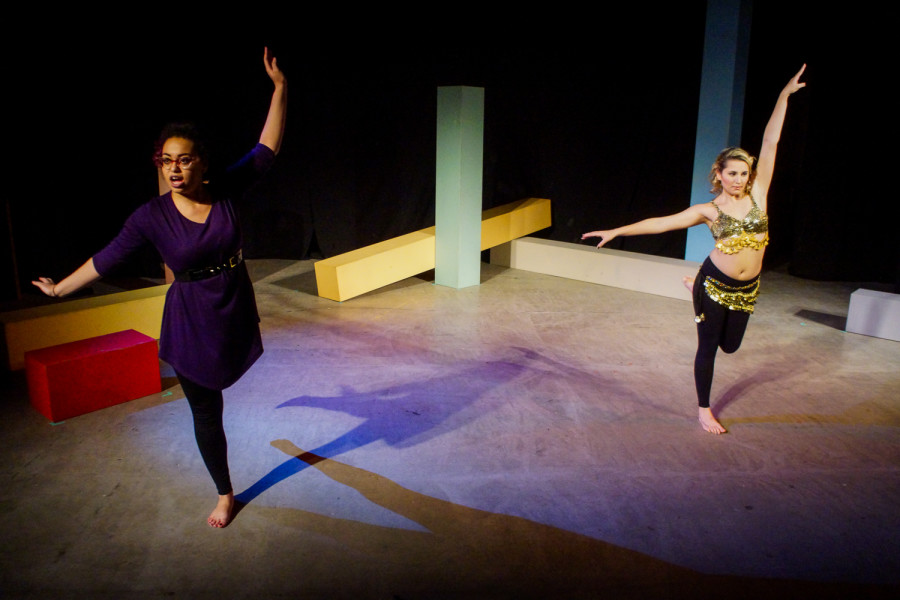
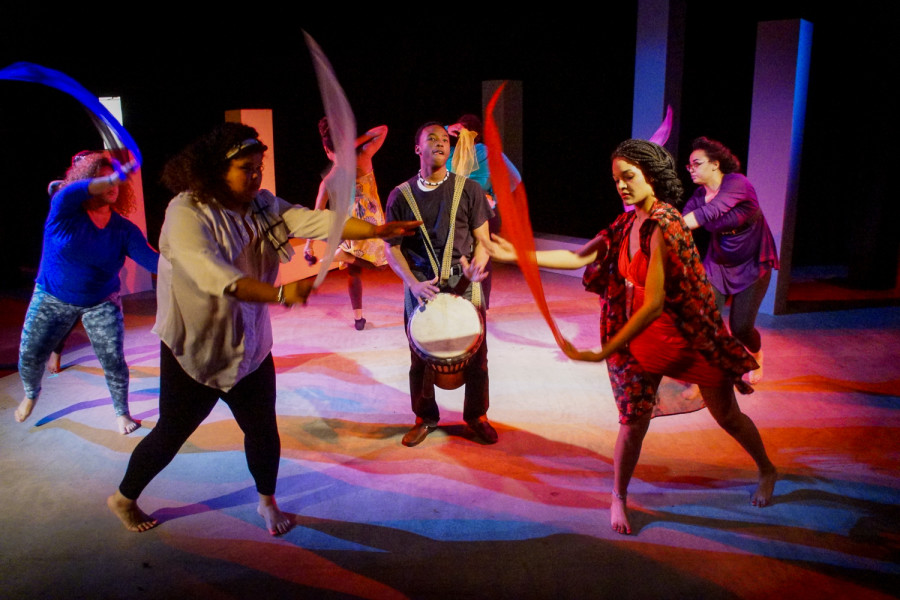
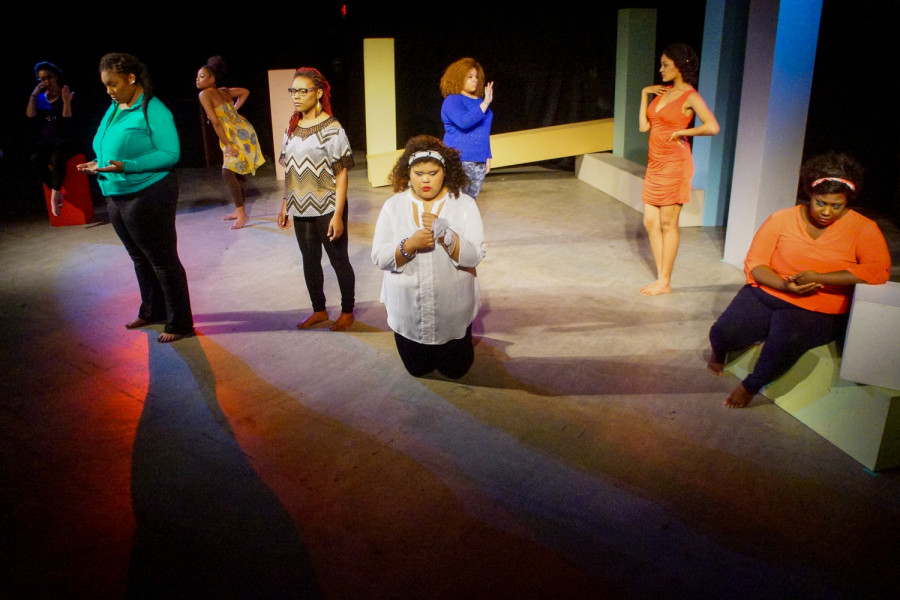
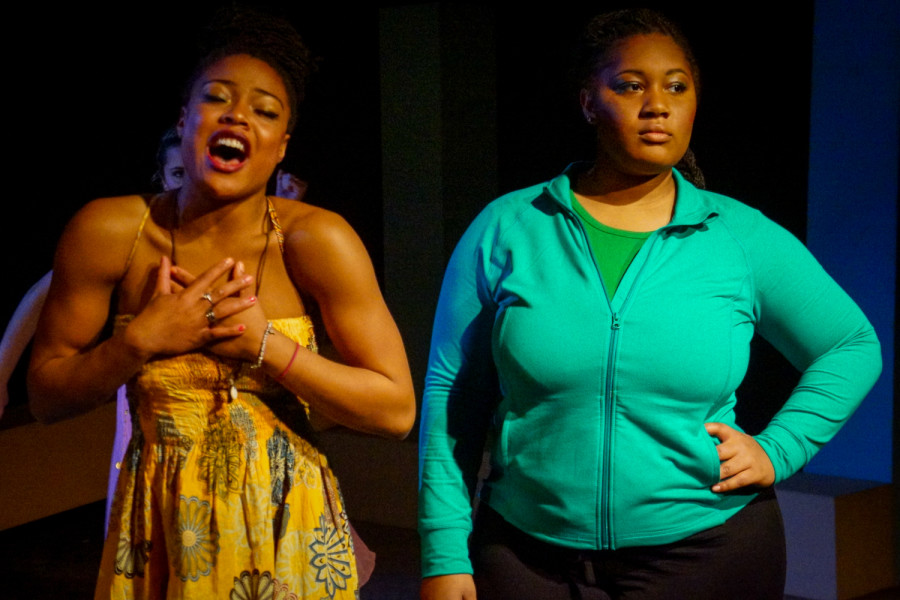

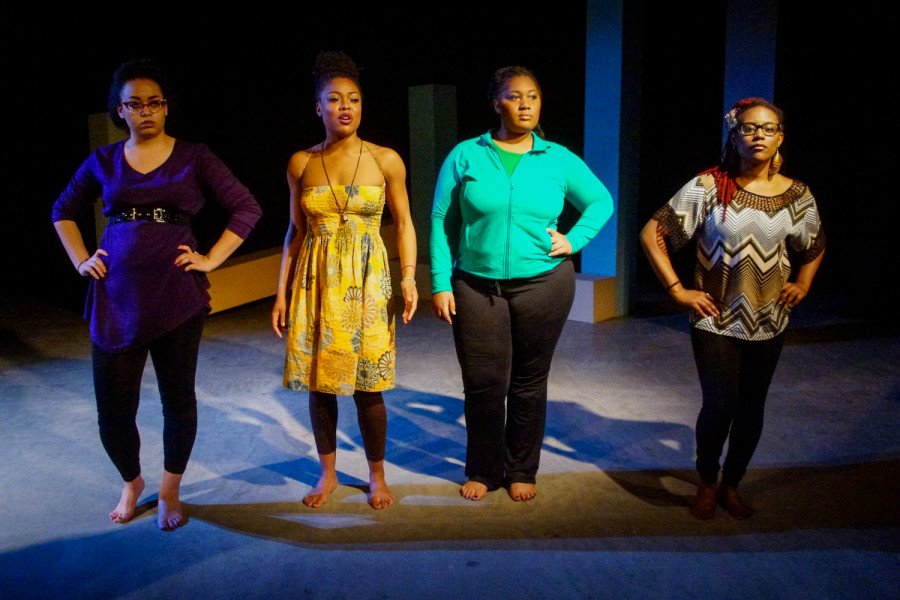
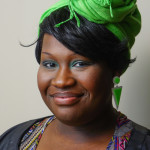
 Jackalope Magazine is the student magazine of Santa Fe University of Art and Design. Building on the interdisciplinary nature of our education, we aim to showcase the talent of our university and character of our city.
Jackalope Magazine is the student magazine of Santa Fe University of Art and Design. Building on the interdisciplinary nature of our education, we aim to showcase the talent of our university and character of our city.
Thanks Andrew! Awesome review, thank you for the support.
Such a wonderful play! What an honor to be part of it!
Congratulations Bruna and cast. beijos. Mari